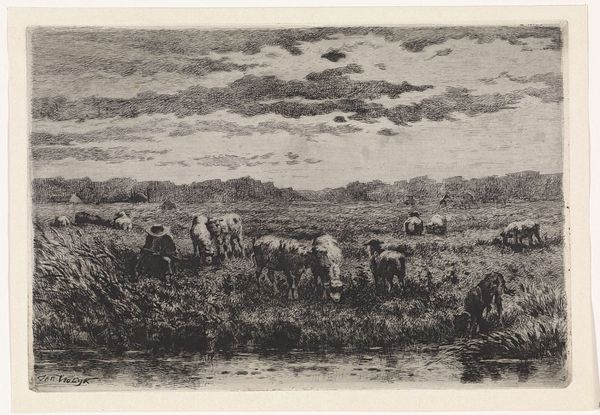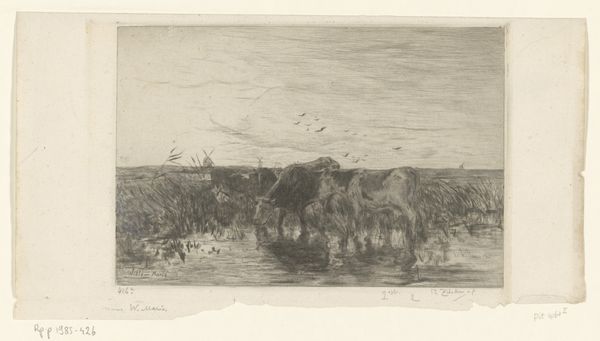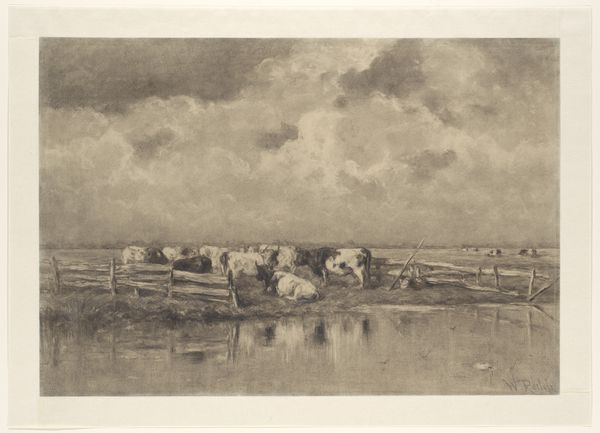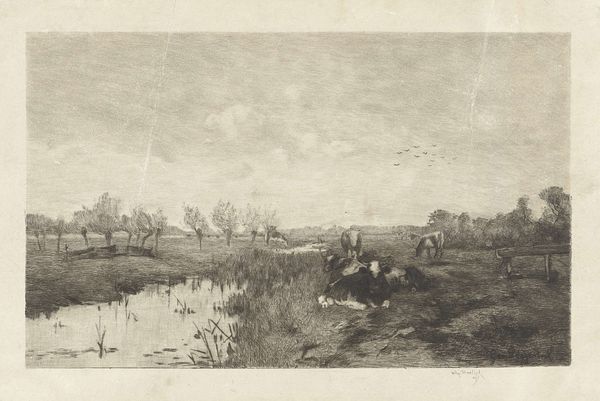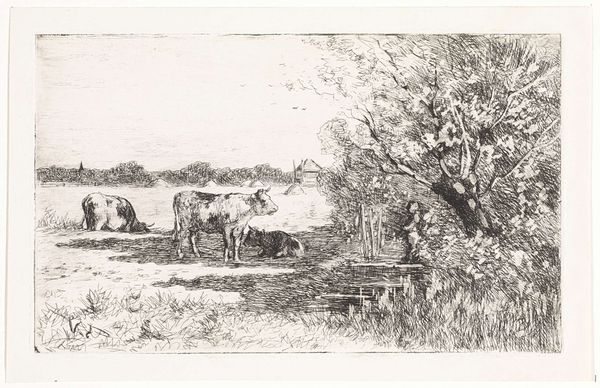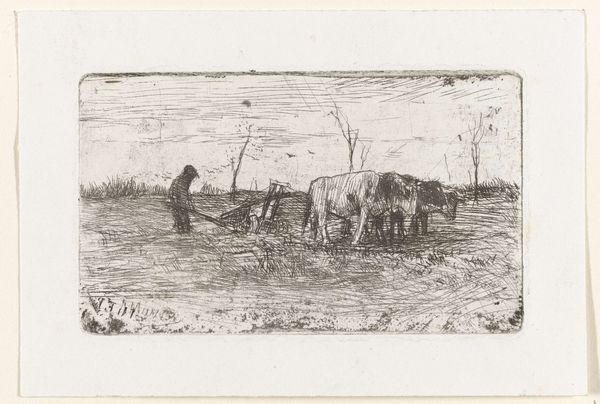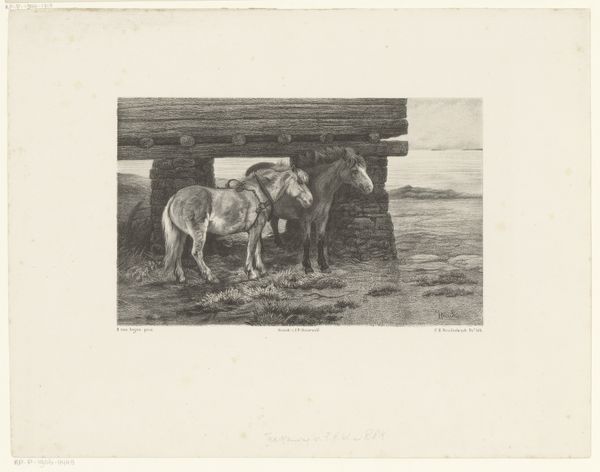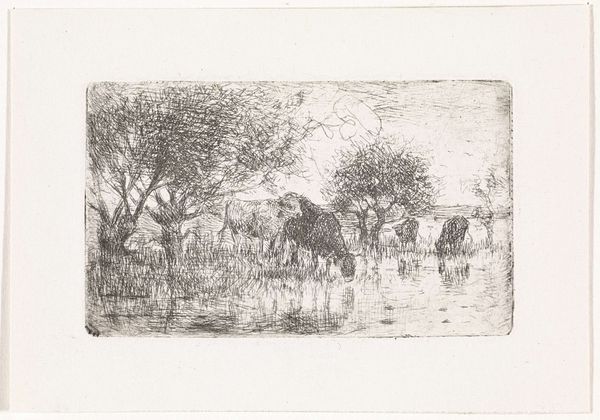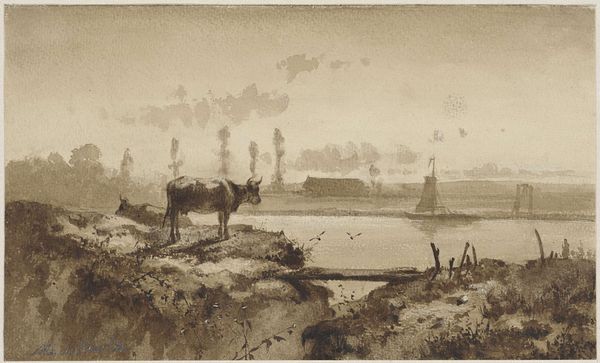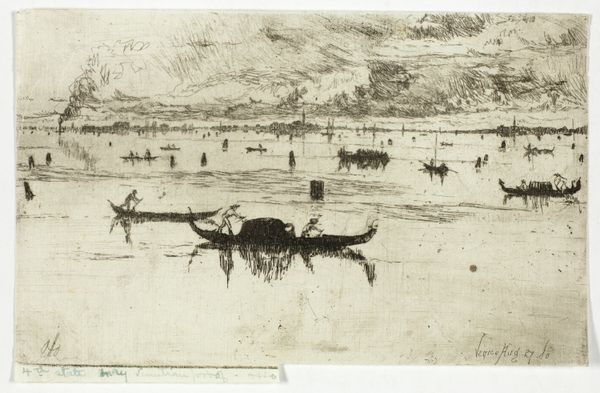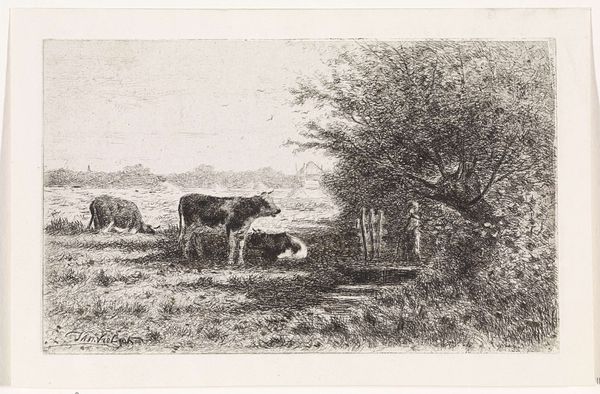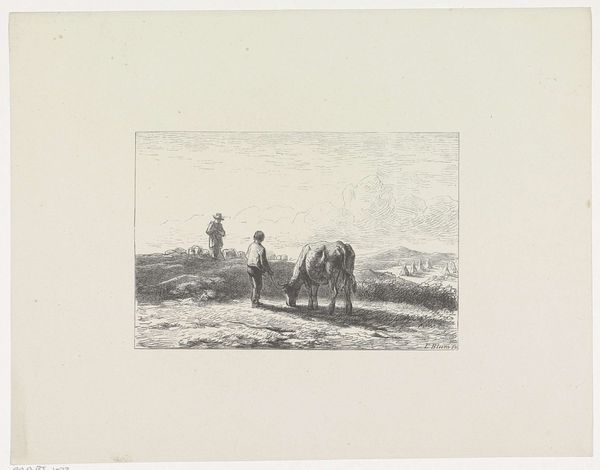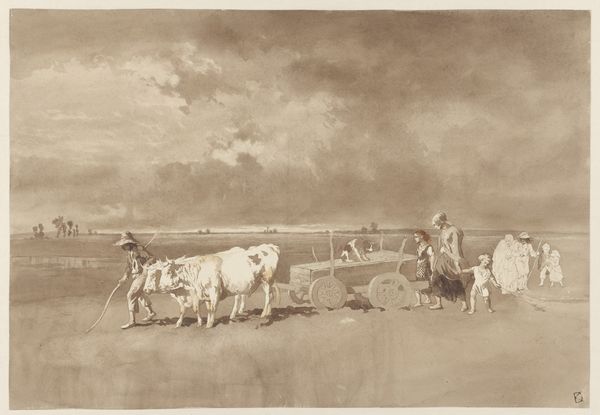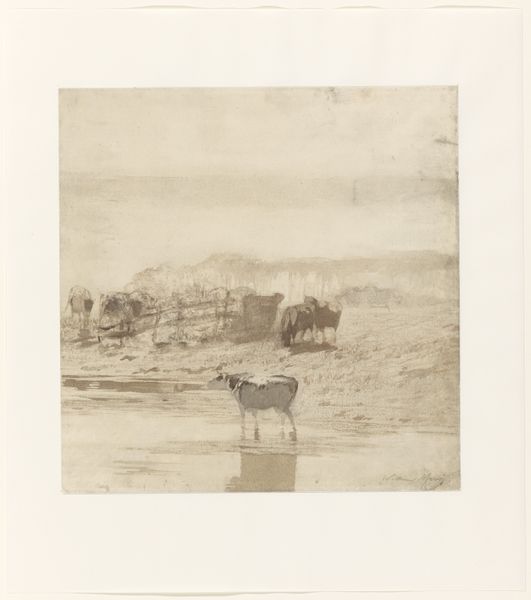
Dimensions: height 305 mm, width 570 mm
Copyright: Rijks Museum: Open Domain
Curator: This drawing, titled "Zonsondergang", attributed to Willem Maris and dating between 1844 and 1910, presents a pastoral scene rendered in pencil. What are your first impressions? Editor: Immediately, I'm struck by the mood—serene, almost melancholic. The composition, with the cows wading through the water, is formally quite balanced, yet there's this overall tonal wash that feels muted, creating a subdued emotional landscape. Curator: Indeed. Looking at Maris' process, it is interesting how he creates atmosphere and feeling through fairly simple means. The paper stock itself seems crucial; it provides the initial texture upon which he builds layers of graphite. It prompts consideration of 19th-century drawing practices, of working en plein air, capturing a fleeting moment. Editor: And within that seeming simplicity, there's a sophisticated play with light and shadow. Note how the darker tones define the cattle's forms as well as the figures of the birds swooping over the lake, and contrast those against the diffused light of the setting sun in the horizon, which isn't explicitly shown but strongly implied. These formal aspects definitely evoke a feeling of quiet observation. Curator: Consider, too, the social context. Maris was part of the Hague School, influenced by French Realism. These artists wanted to portray the daily lives of ordinary people and to celebrate the landscape around them. This pencil work highlights labor and the everyday struggles and simple lives of herders and rural families in their symbiotic existence with livestock. Editor: And in terms of semiotics, we could say that this recurring scene-- the herd, the body of water--becomes emblematic of the Dutch landscape. It signifies ideas of tranquility and a connection to nature that still hold some cultural value. But perhaps also themes of pastoral life facing increasing hardship. Curator: It truly embodies the shift of moving out of golden age idealism, towards representing what’s natural and real to an artist. One sees the transition of the Dutch sensibility mirrored in such pieces from that era. Editor: A shift wonderfully rendered in subtle shades of gray; I find Maris’ exploration and command of monochromatic values especially compelling. I am curious as to his mindset while capturing this scene. Curator: And to me, its value lies in reminding us of how art is inextricable from its context and conditions of production, prompting questions about labour and the land and those whose voices aren’t typically heard. Editor: Well, through close analysis, we find that, regardless of the original intention, form is often married to substance in powerful ways.
Comments
No comments
Be the first to comment and join the conversation on the ultimate creative platform.
